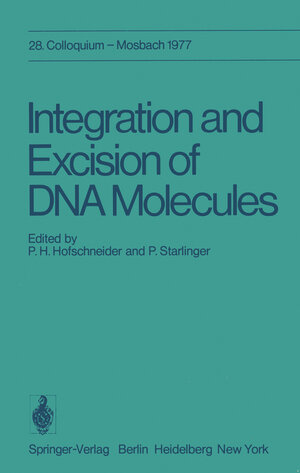
×
![Buchcover ISBN 9783642812057]()
Integration and Excision of DNA Molecules
28. Colloquium der Gesellschaft für Biologische Chemie, am 21.–23. April 1977 in Mosbach/Baden
herausgegeben von P.H. Hofschneider und P. StarlingerThe topic of this years' ~osbach Colloquium was DNA integration. We have tried to bring together experts from different fields of research who are studying natural processes by which DNA molecules from differ ent sources are linked. It has been known for a long time that such linkage occurs between the chromosomes of bacteriophages and plasmids on the one hand and the chromosome of the bacterial host on the other. This process has been especially well studied in bacteriophage A. Since it is controlled in a complicated way, we began with a lecture by M. ptashne on these regulatory processes. H. Nash described the inte gration of bacteriophage A into the bacterial chromosome. To put this site-specific process into perspective, G. Mosig lectured on genetic recombination in prokaryotes in general and K. Murray described the use of bacteriophage A as an artificial vector for genetic engineering. A different kind of bacteriophage integration is shown by bacteriophage Mu, which is much less specific in its choice of an integration site than A. The properties of this phage were described by P. van de Putte.




